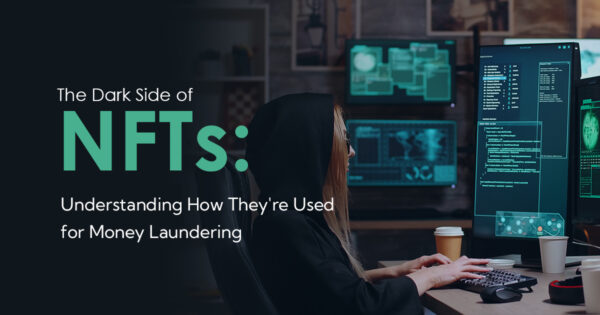Introduction
Non-fungible tokens (NFTs) have been making headlines as digital art and collectibles continue to gain popularity. However, alongside their legitimate uses, NFTs have also attracted the attention of criminals seeking new methods for money laundering. In this blog post, we’ll delve into the details of how NFTs are being exploited for money laundering and the challenges this presents for regulators and law enforcement.
Understanding NFTs
NFTs are unique digital tokens built on blockchain technology, representing ownership of a specific piece of digital content, such as artwork, music, videos, or virtual real estate. The nature of NFTs makes them valuable and easily transferable, making them an attractive target for money laundering.
How NFTs Facilitate Money Laundering
- Anonymity: NFT transactions are often pseudonymous, with buyers and sellers using wallet addresses that don’t directly link to their real-world identities. This level of anonymity makes it difficult for authorities to trace the origin of funds and identify the parties involved in a transaction.
- High Value and Liquidity: Some NFTs have sold for millions of dollars, and the market for trading NFTs is rapidly growing. This high value and liquidity make it easier for criminals to move large sums of money quickly and discreetly.
- Lack of Regulation: The NFT market is relatively new and unregulated, providing a breeding ground for illicit activities. Regulatory bodies are still working on developing rules and guidelines for digital assets, leaving room for criminals to exploit the system.
- Overvaluation: The subjective nature of NFT value makes it possible for criminals to overvalue their digital assets intentionally. They can then sell these overpriced NFTs to launder money through seemingly legitimate transactions.
The Money Laundering Process Using NFTs
Here’s a simplified example of how NFTs can be used for money laundering:
- A criminal organization acquires illicit funds, such as profits from drug trafficking, illegal weapon sales, human trafficking or other illegal activities.
- They create or purchase NFTs using these illicit funds, effectively converting “dirty” money into digital assets.
- The criminal organization then sells the NFTs to an accomplice or a third party, who may be unaware of the illicit origin of the funds, at an inflated price.
- The buyer pays for the NFT using cryptocurrency, which is then converted back into fiat currency by the criminal organization.
- The criminal organization now has “clean” money that appears to have come from a legitimate source, making it difficult for authorities to trace its origin.
Challenges and Possible Solutions
- Enhanced Know-Your-Customer (KYC) procedures: Implementing stricter KYC regulations for NFT marketplaces and platforms can help identify buyers and sellers, reducing the potential for anonymous transactions.
- Monitoring and Reporting: Authorities should encourage NFT marketplaces and platforms to monitor transactions and report suspicious activities. This can help detect patterns of money laundering and identify criminal networks.
- Education and Awareness: Raising awareness about the risks and potential criminal uses of NFTs is essential. Law enforcement, regulators, and the public need to understand the vulnerabilities of this new technology.
- Cross-Border Cooperation: Money laundering using NFTs is a global issue that requires international cooperation. Regulators and law enforcement agencies need to work together to share information, develop best practices, and coordinate efforts to combat this growing threat.



